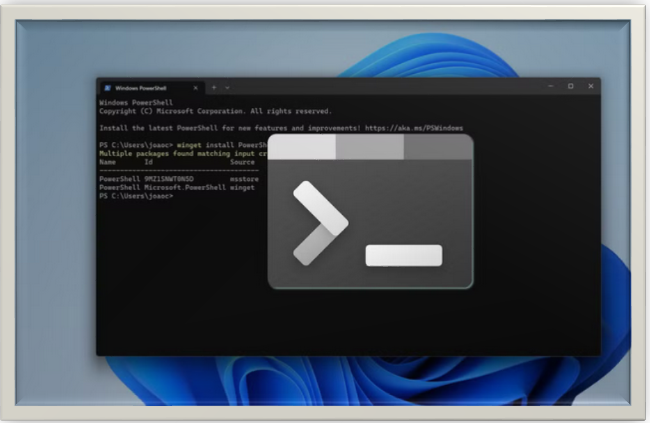A BEGINNER’S GUIDE TO TROUBLESHOOTING COMMON HARDWARE ISSUES
Unlock the secrets of hardware troubleshooting with our beginner's guide! Learn essential tips to fix common issues & keep your devices running smoothly.

INTRODUCTION:
Does your computer behave strangely? Maybe strange noises are coming from the tower, or your screen flickers like a light bulb going out. These are typical hardware malfunctions, and you can restore your machine to working order with a little troubleshooting. Whether you are a student, an expert, or just a fair person who enjoys creativity, it is fundamental to know how to fix frequent hardware problems. Hardware problems can be confusing and range from malfunctioning peripherals to odd error messages. Don't worry, though; we're here to walk you through some basic troubleshooting techniques.
Typical Troubleshooting Tips
Before delving into specifics, let me share some excellent guidelines that work for most hardware troubleshooting that I came across recently:
· Let's start with the basics: Before diving headfirst into complex solutions, it's critical to double-check the basics. Ensure that all peripherals (such as the mouse and console) are properly plugged in, power sources are turned on, and all connections are connected safely. Sometimes all it takes for an equipment problem to arise is a loss of connection.
· Identify the Problem: Keep an eye out for any error messages, strange noises, or odd behavior from your device. Knowing the symptoms will help you narrow down the potential reasons and find a solution more effectively.
· Safety First: Unplug your computer from the power outlet regularly before opening the case.
· Patience Is Essential: Elimination preparation can include troubleshooting. Continue working methodically and try not to give up.
· Document everything: Make a note of any subsequent adjustments you make to your hardware or software, as well as any adverse effects you're experiencing.
· The Restart's Power: Sometimes minor issues can be fixed with a simple restart. Give it a try and move on.
· Consult the Manual: The handbook for your device or computer may contain troubleshooting tips specific to your model.
Typical Equipment Problems and Solutions
Now, let's address some of the most prominent hardware culprits:
1. Power Concerns:
Warning signs include flashing lights, abrupt shutdowns, and computers not turning on.
To solve this:
· Verify Connections: Make sure the power cable is securely inserted into your computer and the wall outlet. Check the cable for damage. If a wall socket on your computer is broken, try plugging it into a different outlet.
· Conduct a PSU (Power Supply Unit) test: All of the components in your computer are controlled by the PSU. In the unlikely event that your computer won't switch on at all, a faulty PSU may be the blame. To test the PSU on your computer, consult the manual or a professional.
2. Display Problems:
The warning signs include broken images, flashing screens, and no display.
To solve this;
· Examine Cables: Verify that the VGA, HDMI, or Display Port video cable connecting your computer to your screen is safe and undamaged. If it is possible, try using a unique cable.
· Verify the monitor settings: Verify that the contrast and brightness of your monitor are precisely balanced. Refer to the monitor's handbook for detailed instructions.
· Test Using a Different Screen: If your device has a spare monitor, try connecting it to your computer. This could provide support in determining whether the problem is with the graphics card or the screen.
3. Computer running slow:
Warning signs: sluggish program execution, moderate boot times, and programs that take a long time to load.
To solve this:
· Free-Up Disk Space: A computer with overstuffed storage may practically slow it down. Remove unnecessary files, delete programs, and think about adding more space if needed.
· Scan for Malware: A malicious program has the potential to slow down your system. Use a reliable antivirus application to perform a check.
· Upgrade RAM: RAM, or random access memory, is essential for efficient operation. If RAM has been limited by your computer, you might want to update it.
4. Overheating:
A typical source of hardware failure, particularly with desktop computers and tablets, may be overheating. Ensure that the entire cooling system of your device—fans, warm sinks, etc.—is operating properly and clear of debris. If overheating seems to be a recurring problem, think about adding a tablet cooling pad or more case fans. Among the symptoms include loud fan humming, erratic restarts, and abrupt shutdowns.
The following arrangements should be taken into consideration:
· Improve Ventilation: Ensure that a valid wind current is flowing through your PC. Keep the computer in a cool, well-ventilated area and avoid block vents.
· Tidy and Clean Dust Buildup: Dust accumulation may trap heat inside your PC. Using compressed air, carefully open the case and clean the fans and vents.
· Look for Fans with Flaws: Keep an eye out for sporadic fan tantrums or the need for fan rotation. It could be necessary to replace a failing fan.
5. Problems with the Printer, Mouse, and Console:
Signs include inactive or broken peripherals.
To solve this;
· Verify Connections: Make sure your peripheral cords are securely plugged into the appropriate computer ports. Try a different USB port if one is available.
· Restart your computer: Believe it or not, many equipment problems can often be fixed with a simple restart. Restarting your device or computer can resolve temporary issues and restore system configurations, potentially resolving the problem without requiring any further action.
· Drivers for Overhaul: Hardware problems might be caused by outdated firmware or drivers. Verify that the firmware, device drivers, and operating system are all current. The majority of operating systems come with built-in tools for updating software, which makes the process quite simple. Compatibility problems may arise with outdated drivers. Get the most recent drivers for your peripheral by going to the manufacturer's website.
· Turn off any unnecessary hardware: Try unplugging all unnecessary accessories and peripherals if you're having problems with a certain hardware component. Conflicts between devices can occasionally lead to problems, and separating the problematic hardware can help identify and fix the problem.
6. Run Diagnostic Tools:
Many Operating Systems come with integrated diagnostic tools that can help identify and resolve hardware problems. These tools are capable of carrying out various checks on the memory, disk drives, and connector arrangement of your equipment to identify the underlying cause of the problem.
When to call a technician:
If you have exhausted all the troubleshooting steps and are still unable to fix the hardware problem, don't hesitate to seek professional aid. Experts in computer repair possess the knowledge and tools necessary to identify and fix a broad range of hardware issues, ensuring that your equipment is operational again without difficulty. Although these guidelines can help with many common hardware problems, in certain situations it is advisable to seek expert assistance:
· Complex Issues: If the troubleshooting procedures don't resolve the issue or if you feel uncomfortable opening your computer case, it's advisable to go to a specialist.
· Component Damage: Visible damage to parts, such as fractured or burned areas, indicates an equipment malfunction.
CONCLUSION:
Following these easy troubleshooting steps will enable you to effectively handle typical hardware problems and maintain the smooth operation of your devices. In the case that you are unsure or unable to address the problem on your own, do not hesitate to seek out assistance. Otherwise, stay patient and methodical in your approach. You will become an expert in hardware troubleshooting very quickly with a little practice and knowledge.
Thanks for reading.
If you like the article, consider sharing and subscribing. ;)




